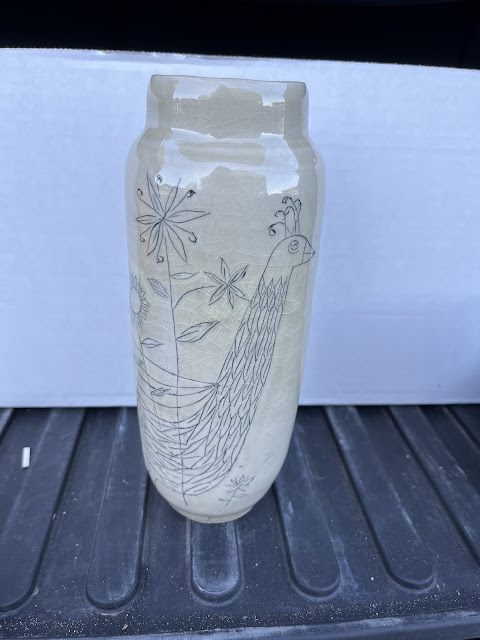Friday, January 31, 2025
clay: anatomy of plates
Thursday, January 30, 2025
clay: heath lamp
I recently went to Heath with a ceramics class for a factory tour and photographed tableware I want to re-create with my own hands. But last year on another Heath factory tour, I took pictures of the lamps. Their lighting is gorgeous.
Monday, January 27, 2025
clay: heath assignment
Friday, January 24, 2025
cook: is ribollita with pork and swiss chard then tuscan pork and bean and vegetable stew?
Not too long ago, I had cooked a pork loin and cannellini bean stew with mainly celery and carrots as the vegetables. The stew was delicious, but needed more green vegetables. And so when I watched a Martha Stewart cooking video of a vegetarian white bean and green vegetables, it drew me at the start because of bread grilled in sage and olive oil and then rubbed with a raw garlic clove to sit in the bottom of the bowl before the soup/stew was spooned on top. This ribollita recipe would also integrate a huge bunch of Swiss chard Patrick had harvested that had also been the vegetable side to our steak and baked potatoes dinner. Serious Eats likewise outlined the history and cooking steps to ribollita, and their recipe looked even more scrumptious. Don't forget to grate Parmesan cheese at the finish.
Serious Eats also recommends riffing on the hearty Tuscan stew to your own tastes and seasonal ingredients, and I did. I also had Italian sausage left from my lasagna making as well as fennel and leek in my fridge as well as rosemary and sage and thyme from the herb garden. So I opine that this is not traditionally Italian, but maybe a bit French too with that leek in the stew.
Patrick declared dinner delicious, and I had remembered to sprinkle Parmesan cheese on top. If I'd had a rind of Parmesan, that would have sent the soup over the top, but luckily the bone broth added a lot of depth of flavor.
Wednesday, January 22, 2025
clay: heath factory tour
And following the ceramics factory tour, we let the kids out of the bus to sketch at the Golden Gate Bridge Welcome Center at the Lincoln way of San Francisco or as you exit the bridge coming from Marin.
Yep, there across is the cove from which we paddled.
I never tire of these views and don't take them for granted.



















































